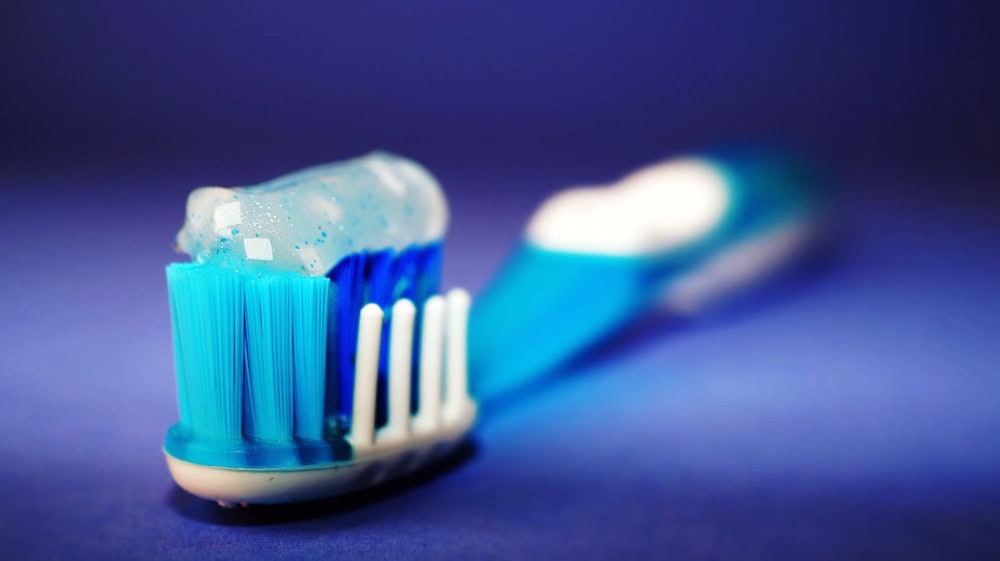
[Image above] Whether in toothpaste or solar cells, fluoride strengthens and protects materials from decay. Credit: Pixabay
Perovskite solar cells (PSCs) hold a lot of promise for the future of solar energy—they are cheap to make, and scientists have increased their power conversion efficiency at an astonishing rate. Yet PSCs face a major hurdle to widespread adoption—stability.
Due to the ionic nature of perovskite materials, numerous defects often form at the surfaces and grain boundaries of perovskite films, particularly in the form of halide anion vacancies and organic cation vacancies. When the perovskite material is then exposed to moisture, light, and heat, these vacancies trigger degradation.
Based on a recent Nature Communications article on perovskite stability, the longest reported lifetime for PSCs currently is about one year—a far cry from the 20–30 years that traditional silicon-based solar cells can last.

Crystal structure of organic–inorganic halide perovskites with generic chemical formula ABX3. A (green) is an organic cation, such as methylamine (MA) or formamidine (FA); B (gray) is lead or tin cations; X (purple) is a halide ion. Credit: Chen et al., Advanced Science (CC BY 4.0)
To make perovskites a viable commercial option, researchers are actively looking for ways to stabilize perovskite structure, in part by investigating ways to passivate (make nonreactive) the cation and anion vacancies.
Last month on CTT, we talked about researchers at the University of California, Los Angeles, who used caffeine to stabilize perovskite structure. Now, a new study by researchers in the Netherlands and China took inspiration from another material that, like caffeine, plays a central role in many people’s morning rituals—fluoride.
Fluoride is a key ingredient in toothpaste because of its ability to bond with calcium and phosphate molecules and form fluorapatite, a mineral that does not dissolve in acid (and thus protects against tooth decay). Fluoride bonds well with these molecules because it is an ion of fluorine, the element with the highest electronegativity (tendency of an atom to attract bonding electrons to itself).
Just as fluoride’s high electronegativity makes it good at bonding with and protecting molecules that compose tooth enamel, it also makes fluoride good at bonding with molecules in perovskites. What makes fluoride especially effective, however, is that it bonds in such a way as to passivate both cation and anion vacancies!

The atomic structure of sodium fluoride (NaF) containing metal halide perovskite formamidinium lead iodide (FAPbI3). Due to its high electronegativity, fluoride stabilizes the perovskite lattice by forming strong hydrogen bonds and ionic bonds on the surface of the material. Credit: Eindhoven University of Technology
As mentioned earlier, many point defects in perovskite materials are due to halide anion vacancies and organic cation vacancies. Scientists have studied numerous methods that control either the cation vacancies or anion ones, but not both. However, as the Netherlands and Chinese researchers explain in their paper, fluoride ions can passivate both vacancy types “by forming strong hydrogen bonds (N–H···F) with organic cations (MA/FA) and strong ionic bonds with lead in the perovskite films.”
Shuxia Tao, second author of the study and assistant professor of computational materials physics at Eindhoven University of Technology (TU/e), explains in a TU/e press release the results of adding fluoride to PSCs. “Our cells maintain 90% of their efficiency after 1,000 hours under extreme light and heat conditions. This is many times as long as traditional perovskite compounds. We achieve an efficiency of 21.3%, which is a very good starting point for further efficiency gains.”
Though these results are impressive, Tao adds that there is still a lot of work that remains to be done. “We expect it will take another five to ten years for these cells to become a commercially viable product,” she says. “Not only do we need to further improve their efficiency and stability, we also need to gain a better theoretical understanding of the relevant mechanisms at the atomic scale.”
First caffeine, now fluoride—what common household item will researchers discover next to aid PSC stability?
The paper, published in Nature Energy, is “Cation and anion immobilization through chemical bonding enhancement with fluorides for stable halide perovskite solar cells” (DOI: 10.1038/s41560-019-0382-6).
Author
Lisa McDonald
CTT Categories
- Energy


